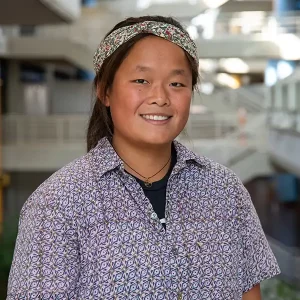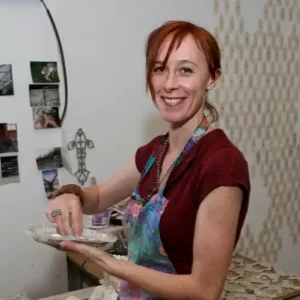Ceramics
Investigate form and its evolution. Learn how to create with your hands. Shape society.
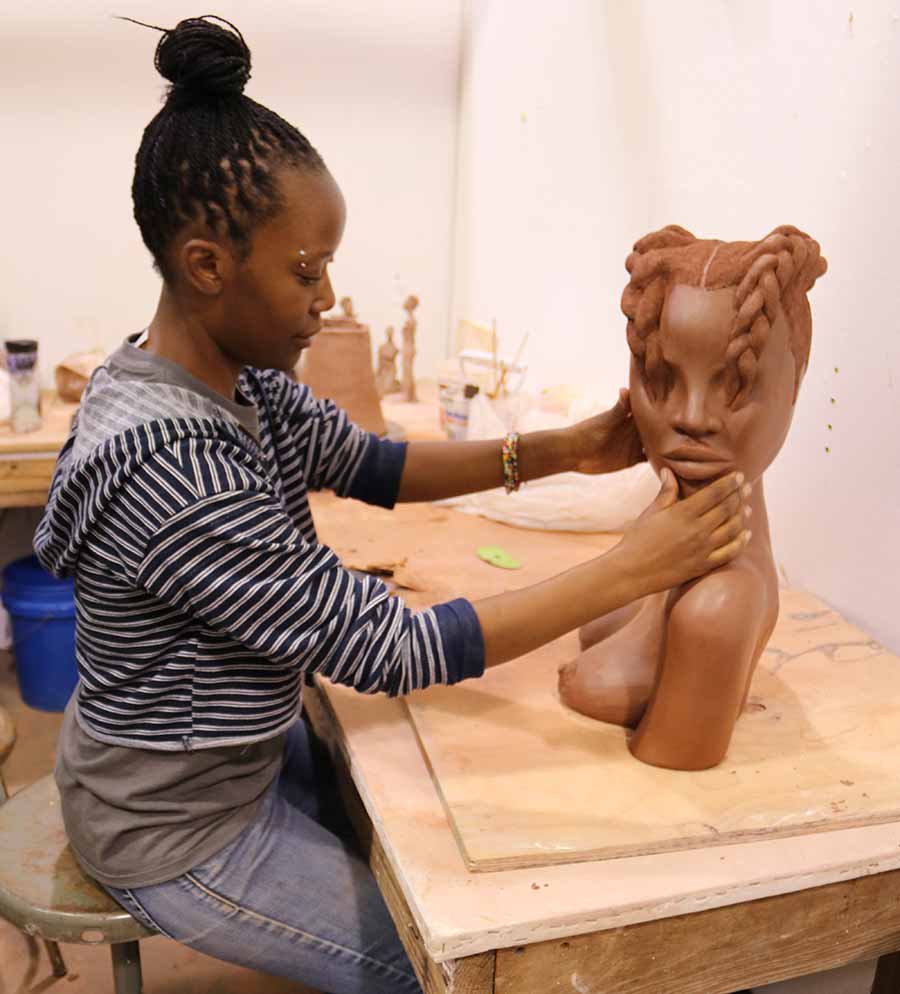
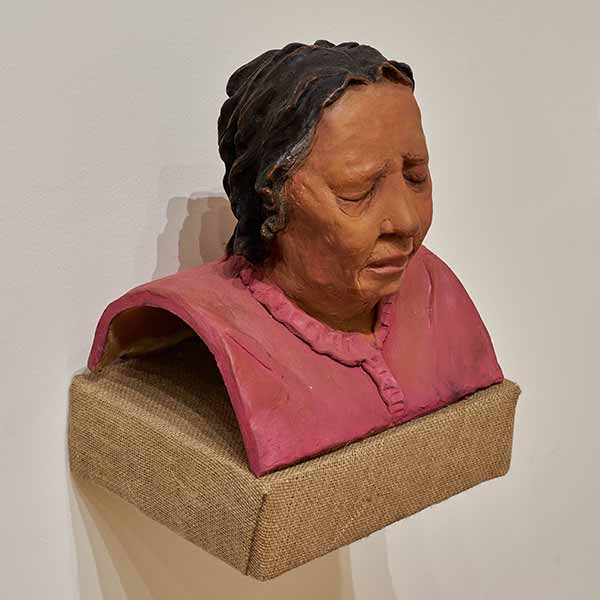
MODEL YOUR EXPERIENCE
Ceramics are ancient materials that continue to convey complex ideas in novel ways. The School of Art offers graduate and undergraduate programs in ceramics as well as a minor and elective courses for non-art majors. Our impressive ceramics facilities include an array of gas and electric kilns, and students have access to a range of hand and power tools to pursue any project. Our students become creative professionals both engaged in contemporary dialogues and grounded in traditional processes and forms.
Programs in Ceramics
Master of Fine Arts
The Master of Fine Arts degree in studio art with a concentration in ceramics offers students a rigorous, three-year interdisciplinary course of study. Our award-winning faculty mentor students to investigate critical, conceptual, and historical issues through structured coursework and self-directed studio practices. Graduate students have the opportunity to teach undergraduate courses or assist senior faculty in classrooms, labs, and workshops. Explore the options below to learn more about our graduate program.
Email Faculty Representative Sally Brogden
Degree Requirements
Offered Courses
- ART 503 Theory/Practice/Art Fundamentals
- ART 504 First-Semester Graduate Seminar
- ART 507 Professional Practice: Teaching Internship
- ART 521 Graduate Ceramics I
- ART 525 Graduate Ceramics II
- ART 595 Visiting Artist Seminar
Option: Art History Minor
A graduate minor in art history may be arranged during the student’s first semester of study with the consent of the student’s area instructors and the art history faculty. After a review of previous undergraduate coursework, students must complete a minimum of 12 approved credit hours in art history. A reading knowledge of French, German, or Italian is a prerequisite, unless waived by the art history faculty. Graduate Council policy stipulates that a member from the minor unit must serve on the thesis committee.
Bachelor of Arts or Bachelor of Fine Arts
The School of Art offers a Bachelor of Arts degree in studio art and a Bachelor of Fine Arts degree in studio art to students interested in ceramics. The Bachelor of Arts curriculum includes a higher percentage of general education courses for students pursuing a broader liberal arts education, whereas the Bachelor of Fine Arts curriculum includes more studio courses for students considering careers or graduate study in the visual arts. Our ceramics faculty teach courses in throwing and handbuilding techniques for both functional and sculptural applications. Undergraduate ceramics students consider the expressive potential of clay as they develop their individual formal vocabulary and ideas. Explore the options below to learn more about our undergraduate programs.
Degree Requirements
Offered Courses
- ARTB 221 Introduction to Ceramic Sculpture
- ARTB 222 Beginning Pottery
- ARTB 321 Intermediate Ceramic Sculpture
- ARTB 322 Intermediate Pottery
- ARTB 421 Advanced Ceramic Sculpture
- ARTB 422 Advanced Pottery
Minor
The School of Art offers a studio art minor for students interested in ceramics while pursuing other fields of study. Explore the options below to learn more about our minor program.
Minor Requirements
Offered Courses
- ARTB 221 Introduction to Ceramic Sculpture
- ARTB 222 Beginning Pottery
- ARTB 321 Intermediate Ceramic Sculpture
- ARTB 322 Intermediate Pottery
- ARTB 421 Advanced Ceramic Sculpture
- ARTB 422 Advanced Pottery
Non-Major Electives
The School of Art offers courses in ceramics for non-art majors. Explore the option below to learn more about our non-major electives.
Offered Courses
- ARTN 221 Non-Major Intro to Ceramic Sculpture
- ARTN 222 Non-Major Intro to Pottery
Faculty
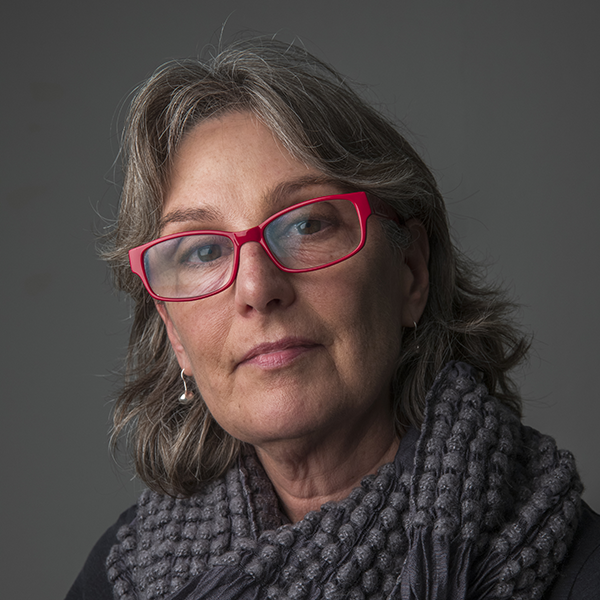

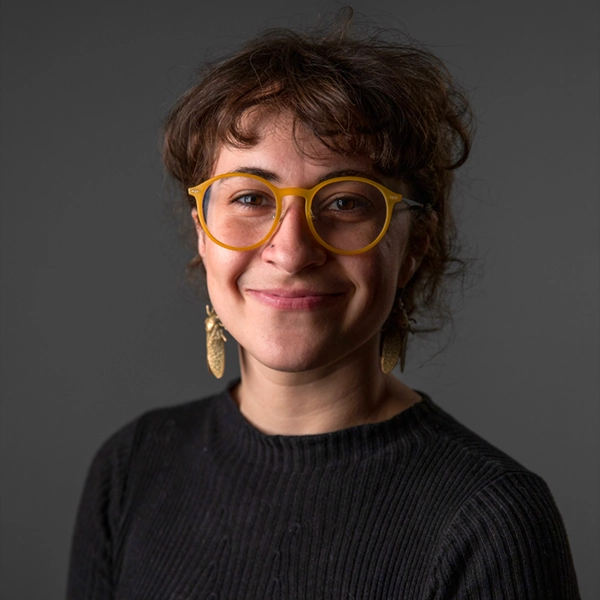
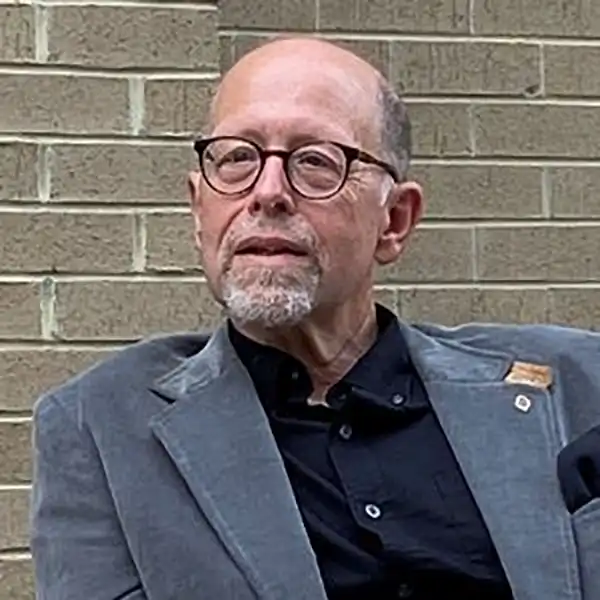
Ceramics News
Resources
Artist-in-Residence Program and Visiting Artists and Scholars Program
Facilities
Helpful Links and Videos
Area Resources
Graduate Study
Internships and Workshops
Professional Organizations
